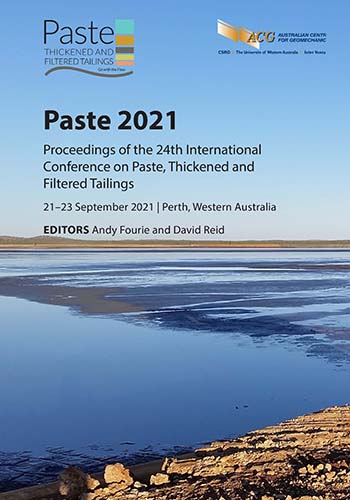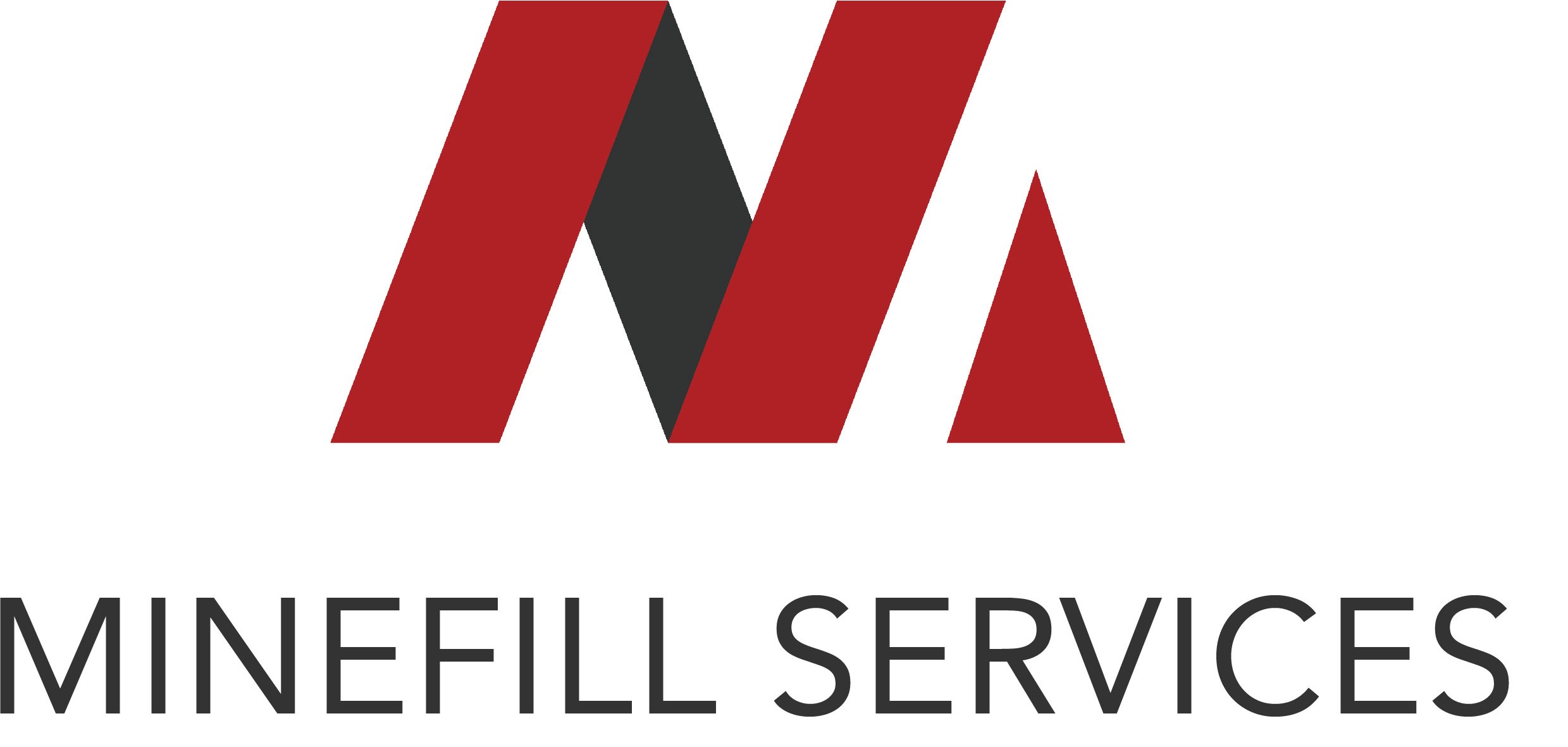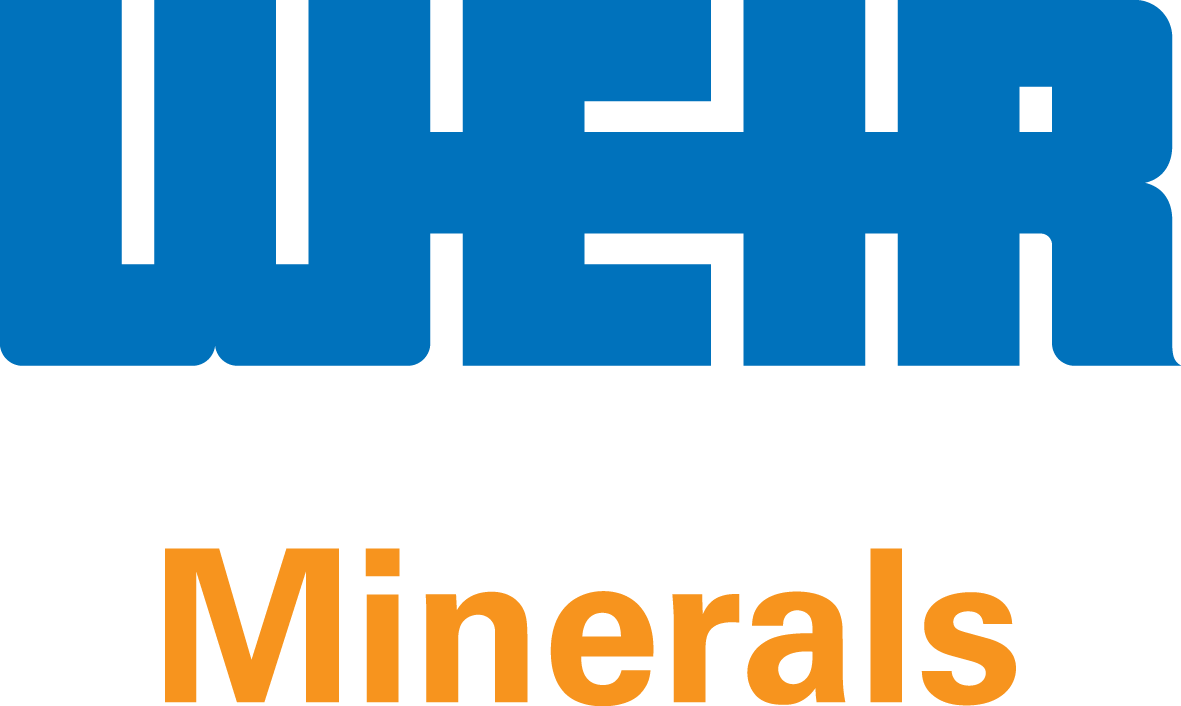Achieving the design intent, reducing risk and saving costs of tailings storage facilities

|
Authors: Coffey, JP; Plunkett, JD; Patel, A; Oliver, J; Gunner, M; Carneiro, A |
DOI https://doi.org/10.36487/ACG_repo/2115_01
Cite As:
Coffey, JP, Plunkett, JD, Patel, A, Oliver, J, Gunner, M & Carneiro, A 2021, 'Achieving the design intent, reducing risk and saving costs of tailings storage facilities', in AB Fourie & D Reid (eds), Paste 2021: Proceedings of the 24th International Conference on Paste, Thickened and Filtered Tailings, Australian Centre for Geomechanics, Perth, pp. 3-16, https://doi.org/10.36487/ACG_repo/2115_01
Abstract:
The mining industry continuously strives to increase the effectiveness of tailings management practices to minimise impacts on people and the environment. A commonly stated objective of operations is to achieve the design intent, but is this clearly communicated by designers and understood by stakeholders? Planning, operating, monitoring and closing a tailings storage facility (TSF) can present many challenges, especially in dynamic mining environments where site conditions vary spatially and with time. However, big impacts can be made at relatively small cost once the tailings management system, design and performance are well defined and understood. This paper presents various examples of initiatives aimed at achieving the design intent that have been adopted by Rio Tinto Iron Ore, which also reduce risks and improve tailings management performance. Examples presented include development and communication of short-term, long-term and life-of-facility deposition plans, implementation of simple deposition management tools, monitoring and managing slurry density, development and continual oversight of water balance models, and sound investment in water management infrastructure extending to safe performance in emergency situations. Regular governance was also implemented to provide assurance that these controls remain effective. These improvements also provide a financial benefit in the form of deferred capital expenditure due to the achievement of greater in situ densities of tailings deposits; a fortuitous by-product of following the principles within the Global Industry Standard on Tailings Management (GISTM) (Global Tailings Review 2020) and other industry guidance documents. As such, this paper aims to illustrate the benefits of continually improving tailings management practices with a focus on simple and in some cases novel approaches.
Keywords: tailings management, design intent, deposition, water balance, decant
References:
Australian National Committee on Large Dams 2019, Guidelines on Tailings Dams Planning, Design, Construction, Operation and Closure, Australian National Committee on Large Dams, Hobart.
Azam, S & Li, Q, 2010, ‘Tailings dam failures: a review of the last one hundred years’, Geotechnical News, vol. 28, December 2010, pp. 50–53.
Clarkson, L & Williams, D 2021, ‘An overview of conventional tailings dam geotechnical failure mechanisms’, Mining, Metallurgy & Exploration, vol. 38, no. 3, pp. 1305–1328.
Department of Mines, Industry Regulation and Safety 2021, How is Safe Design Verified?, Perth, viewed 25 April 2021,
Geoprofessional Business Association 2018, Proposed Best Practices for the Engineer of Record (EOR) for Tailings Dams, Geoprofessional Business Association, Rockville.
International Committee on Large Dams 2001, Tailings Dams: Risk of Dangerous Occurrences – Lessons Learnt from Practical Experiences, bulletin 121, United Nations Environmental Programme Division of Technology, Industry and Economics, and International Commission on Large Dams, Paris.
International Organization for Standardization 2005, Industrial Automation Systems and Integration — Product Data Representation and Exchange — Part 108: Integrated Application Resource: Parameterization and Constraints for Explicit Geometric Product Models (ISO 10303-108), International Organization for Standardization, Geneve.
Liu, J & Sun, Z 2008, ‘Representing design intents for design thinking process modelling, in XT Yan, WJ Ion & B Eynard (eds), Global Design to Gain a Competitive Edge, Springer, London,
Mining Association of Canada, 2021, A Guide to the Management of Tailings Facilities Version 3.2, Mining Association of Canada, Ottawa.
Morgenstern, NR, Vick, SG, Viotti, CB & Watts, BD 2016, Fundão Tailings Dam Review Panel: Report on the Immediate Causes of the Failure of the Fundão Dam, viewed 11 August 2021,
Rico, M, Benito, G, Salgueiro, AR, Diez-Herrero, A & Pereira, HG 2008, ‘Reported tailings dam failures a review of the European incidents in the worldwide context’, Journal of Hazardous Materials, vol. 152, pp. 846–852.
© Copyright 2025, Australian Centre for Geomechanics (ACG), The University of Western Australia. All rights reserved.
View copyright/legal information
Please direct any queries or error reports to repository-acg@uwa.edu.au
View copyright/legal information
Please direct any queries or error reports to repository-acg@uwa.edu.au





